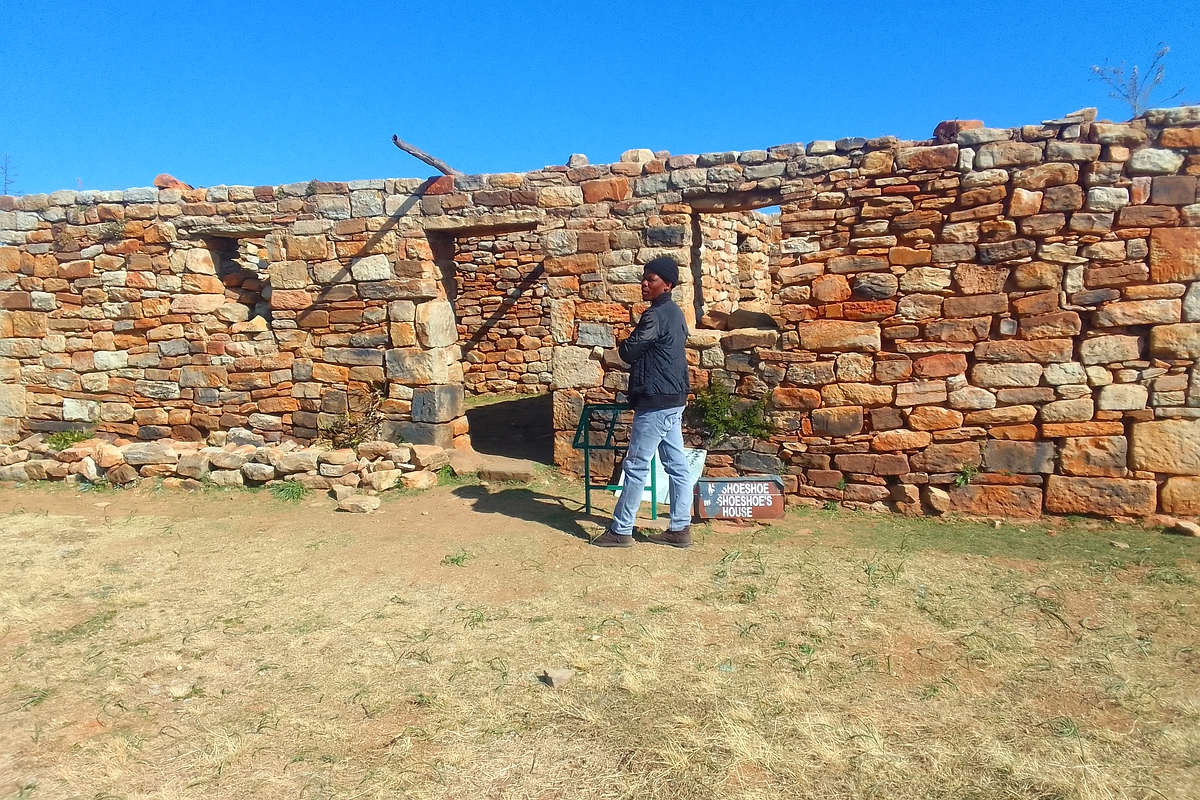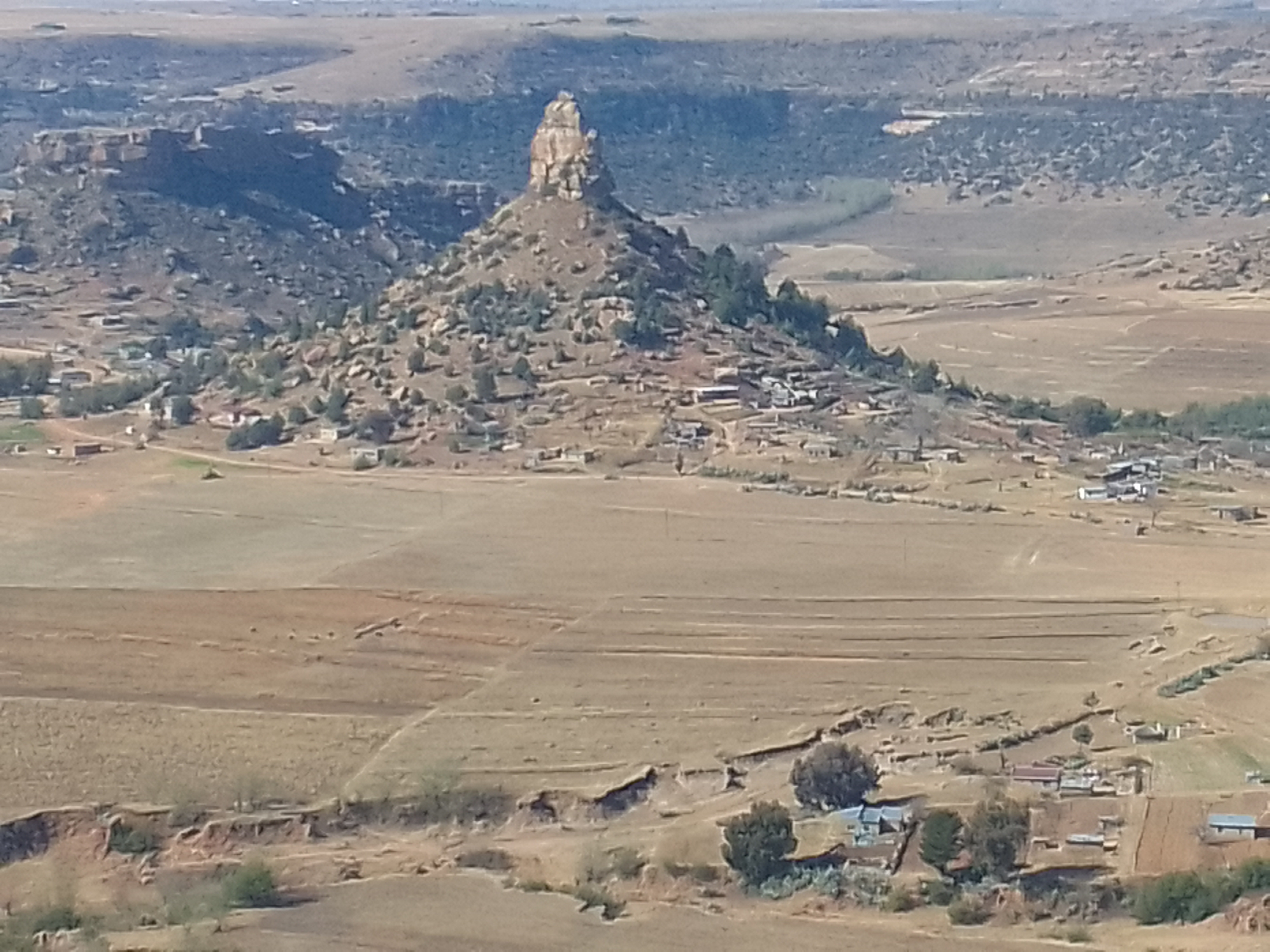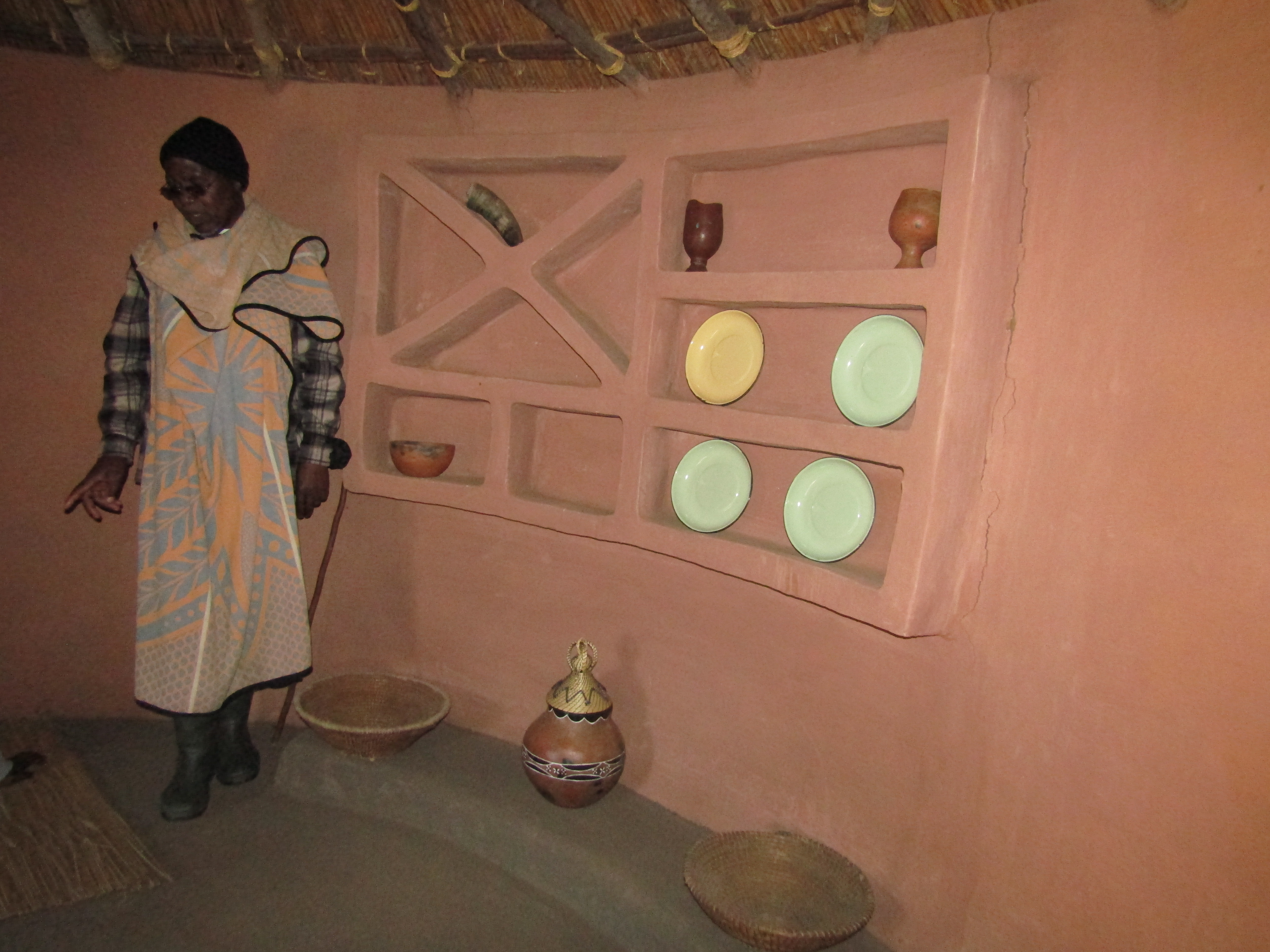Learning Basotho’s history and culture is a very cheap process when one is in Maseru, the capital city of Lesotho. On June 6th 2022, I decided to travel to Thaba Bosiu, a place King Moshoeshoe I used to build a nation we call Basotho today. Thaba Bosiu is about 23.3 km on the eastern part from Maseru.
travel
Sept. 9, 2022
WITH MAPAMELA KHANYELA
3 min read
THE NOMAD - My journey to Thaba Bosiu plateau

Ntaote Tšoeu, a tour guide at Thaba Bosiu showing us the ‘then’ mansion of Moshoeshoe I located on top of Thaba Bosiu
Story highlights
I left Maseru around 10:30 am and arrived at Thaba Bosiu Tourism Information Centre at 11:00 am in the morning, it was a sunny day. When I arrived at the Information Centre, I met a tour guide by the name of Ntaote Tšoeu who has been working at this place for a year. I introduced myself to him and we left for the summit of Thaba Bosiu plateau after paying M30. We used khoro ea Basali Pass to arrive at the summit of the mountain.
As a custom, we introduced ourselves to the ancestors of the plateau as we arrive at the main entrance and said “likhomo Mora Mokhachane/we came in peace the son of Mokhachane” as we lay some stones to a mound of stones. Next to this pile was a big rock; the tour guide told me it was a place where King Moshoeshoe I used to sit and have a beautiful view of the fields below the mountain and possibly to also see his enemies from a distance.
We passed the grave of Ramootsi, a man who was buried alongside the road because he committed suicide and was seen as a weak man.
We arrived at the village of King Moshoeshoe I. The walls still stand strong of the house Ntaote told me it belonged to King Moshoeshoe I. The King’s house was the biggest of the households on top of Thaba Bosiu, it accommodated his bedroom and a room for his guards as explained by the tour guide. We entered the house and there were many torn papers. The torn papers belong to high school students asking for luck before their final examinations as stated by the tour guide.
At this village, there is khotla, a place where only initiated Basotho men used to meet and talk about important issues. Women and uninitiated men were not allowed to enter khotla. The kraal believed to be belonging to King Moshoeshoe I is still visible, there is also a tree that was a gift by Missionaries to Moshoeshoe.

Qiloane mountain, from which popular Basotho hat ‘mokorotlo’ was invented, located at Thaba Bosiu.
Enjoy our daily newsletter from today
Access exclusive newsletters, along with previews of new media releases.

Rantaoleng Moiloa has been working as a tour guide at Thaba Bosiu since 1987
From the village we headed to the graveyard that was only meant for important people during Moshoeshoe I’s times. King Moshoeshoe’s grave had some ashes because some tourists come to the mountain to pray with a belief that their prayers would be answered only if they pray at King Moshoeshoe I’s grave because he was a father of the nation. Besides Moshoeshoe I’s grave, his sons were also buried on top of the mountain as well as Makoanyane a commander of the warriors of Moshoeshoe.
The mountain also has some sand, a place where men used to bury their cloths for some days when they were dirty before using them again. From the sand we went down to Thaba Bosiu Cultural village through Rafutho Pass, the main pass of the mountain. The pass is mostly used by students for education purposes. As we travelled back to Rafutho pass, we waited for some minutes at viewpoint. In this viewpoint, tourists see the beauty of Qiloane Mountain which is resembled with Basotho hat, mokorotlo.
I went to Thaba Bosiu Cultural village and met another tour guide by the name of Rantaoleng Moiloa who has been working as a tour guide since 1987 to date. The village is the image of how the set up was on top of the mountain. Mr. Rantaoleng took me to the main entrance of the village. The cultural village had some houses meant for young girls and elderly women. There is also a house called Thakaneng, where young girls of the same age used to sleep together.
The Cultural Village also has a Museum which shows the life of Basotho from many years ago. The museum sequentially shows arrival of people in Lesotho, starting with the Sans who were believed to have arrived in Lesotho around 1600. The Museum also has some artifacts that were found on top of the mountain by Ministry of Tourism, Environment and Culture in 2015.
Tailored for you




